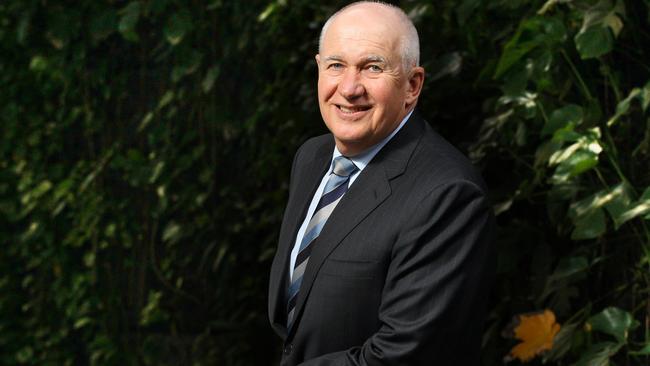
Gallagher was meeting with joint venture partners through the week including Oil Search, with the two hosting regular catch-ups on their Papua New Guinea LNG project where they each hold stakes.
Both had plenty on their mind. Gallagher had recently received a $6m carrot to keep him out of the race for Woodside Petroleum’s top job while Wulff’s corporate career was about to take an abrupt turn as bullying complaints surfaced from a whistleblower.
On the day they met, Gallagher is thought to have reprised a pitch first aired five months earlier. Namely, had Wulff given any more thought to a potential “merger” between the two LNG producers. Wulff, by any stretch, was in a delicate spot.
Alongside the worsening of a long-term health condition and industry rumours about his aggressive management style, the clock was also ticking on a challenging deal to both sell down its exposure in an Alaskan oil project and also convince climate-focused banks to provide funding for the development.

The meeting was cordial but inconclusive. From Oil Search’s perspective, Santos had never put a proposal on the table. While the talk had some logic to it, there was nothing concrete to consider. But within days, Santos spotted its opportunity.
Oil Search’s biggest shareholder - Abu Dhabi‘s sovereign wealth fund Mubadala - sold half its stake on June 23 and resigned its position from the board. It signalled to Santos that Mubadala had seen the strategy for PNG and Alaska and wasn’t convinced, opening the door for a potential tie-up pitch.
Two days later Santos chairman Keith Spence delivered the $23bn merger proposal to Rick Lee, his counterpart at Oil Search. Spence knew Lee well after serving as an Oil Search director for five years under his watch before jumping ship to rival Santos.
The approach - with Oil Search’s shares under performing a revival in crude prices and uncertainty over Alaska - appeared well timed.

Lee for his part also had plenty to contend with. Wulff was now on sick leave and a major investigation into the behaviour of his CEO had begun following the whistleblower complaint.
Exactly two weeks later on July 9, Oil Search responded. While the strength of a bigger company and a united strategy held potential merit, it wanted a better deal on the table.
Santos had been rebuffed but saw it as just the opening shot. Almost immediately it began campaigning for “a chat” to see if the two sides could nut out a deal. If due diligence was out of the question, it at least wanted a similar courtesy given by Spark Infrastructure to its $5bn suitors which received a management briefing as an olive branch.
Oil Search saw things differently. Despite the howls of several investors, it had no immediate plans to engage on an offer which it saw as the wrong deal. Change the terms and there might be a conversation, but until then it regarded engagement as the wrong strategy.
Then the bombshell hit. Wulff resigned on Monday morning owing to an unusual combination of deteriorating health and complaints over bullying.
All of a sudden a webcast meant for analysts and a handful of journalists had dozens of extras logging on with Santos among those curious how Oil Search was going to play its hand.
Rumours about a Santos-Oil Search merger had now hit the market and several analysts questioned whether Lee and his board had received any takeover approaches.
The response from Lee was unequivocal: none had been received and if any arrived investors would be the first to know. Either he had forgotten the rejection letter sent 10 days earlier to Spence or a $23bn merger wasn’t seen as material to mention.
In Santos’ Adelaide headquarters, there was only one thing for it. Spence fired off a new letter on Monday night to Lee reminding him of the mega merger offer on the table, the industrial logic of doing a deal and questioning whether it should be brought to the attention of shareholders given its materiality.
Oil Search had already started to prepare its mea culpa but the Santos letter added to tensions.
Shortly after the ASX opened on Tuesday, Oil Search clarified its comments of the previous day. A change of control proposal had been received by an unnamed suitor, but was rejected on value grounds.
Santos not only confirmed it was the party but attached its eight-page offer for extra effect. Hours later, Oil Search responded again that while it saw merit in the merger, the terms weren’t right.
After six months of video calls between the two sides, the deal was finally out in the open. With pressure growing on Lee’s tenure and with Wulff out the door, Santos is now watching and waiting.


When Santos boss Kevin Gallagher arrived in Perth on June 14 for the annual Appea oil and gas industry conference, a meeting with Oil Search’s Keiran Wulff had already been slotted in the diary.